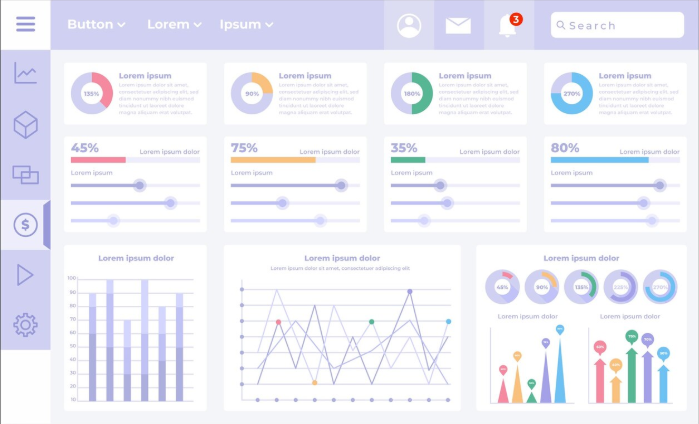🚀 Want to know exactly which campaign brings you real CPA conversions?
You’re in the right place. UTM parameters are the secret tools top marketers use to track every click, source, and sale with full clarity.

📊 Whether you’re running ads, email promos, or affiliate traffic, this guide will help you set up UTM tags the right way no confusion, no tech jargon.
🔥 Ready to stop guessing and start tracking smarter? Let’s dive in and boost your campaign ROI now!
What Is Traffic Attribution?
Traffic attribution helps you understand where your website visitors are coming from and what made them take action—like signing up or making a purchase.
📌 Example: If someone clicks your Facebook ad and makes a CPA conversion, traffic attribution tells you Facebook was the source of that conversion.
You can track:
- Which ad platforms perform best (e.g., Facebook vs Google Ads)
- Which campaign brings the most leads or sales
- How each source contributes to your ROI
What Are UTM Parameters?
UTM parameters are small tags you add to a URL. They help track the source of your traffic inside tools like Google Analytics 4 (GA4).

🛠️ Here’s a simple UTM-tagged link:
https://example.com/?utm_source=facebook&utm_medium=cpc&utm_campaign=summer_sale
Breakdown:
utm_source=facebook→ where the visitor came fromutm_medium=cpc→ the type of marketing (cost per click ad)utm_campaign=summer_sale→ your campaign name
💡Think of UTMs like digital name tags for your traffic!
How to Create Trackable UTM Parameters
You can create UTM links using Google’s Campaign URL Builder.
Here’s how:
👉 Suppose you’re promoting a CPA offer through an email:
rubyCopyEdithttps://example.com/?utm_source=newsletter&utm_medium=email&utm_campaign=discount_offer
🧠 Tips for naming:
- Keep it lowercase:
utm_source=google, notGoogle - Use hyphens instead of spaces:
utm_campaign=black-friday-sale - Be consistent: Don’t mix “email” and “Email” in
utm_medium
3 UTM Parameter Best Practices
To get accurate tracking results, follow these 3 important rules:
🟢 1. Always be consistent
If you use “email” in one campaign and “Email” in another, GA4 will count them as different. Stay uniform.
🟢 2. Don’t overcomplicate it
Only use what’s needed. Overloading with all 5 parameters (source, medium, campaign, term, content) isn’t always helpful.

🟢 3. Use utm_content for A/B testing
If you’re testing two versions of an ad, you can use:
iniCopyEditutm_content=version_a
utm_content=version_b
This helps you know which ad design or copy gets better results.
Use UTMs to Convert More Website Visitors
UTMs don’t just track clicks—they show you what works so you can improve.
💡 Here’s how to use them for CPA growth:

- Track which partners or influencers bring CPA signups
- Compare Facebook ad variations using
utm_content - Identify email campaigns that convert vs. those that don’t
- Filter traffic by channel in GA4 and measure conversions
📊 With these insights, you can cut budget from underperforming sources and double down on winning channels.
Bonus Tips for CPA Tracking Precision
Here are 3 expert-level but easy-to-use ideas:
🔹 Use Partner Names in utm_source
For example:
iniCopyEditutm_source=affiliate_john
You’ll know which affiliate brought the CPA.
🔹 Automate link creation
Use Google Sheets to auto-generate UTM links for bulk campaigns. Saves time and reduces errors.
🔹 Audit links monthly
Check for typos like “facebok” or missing parameters to keep tracking accurate.
Conclusion
Tracking your CPA campaigns doesn’t have to be complicated. With UTM parameters, you get clear, simple data on where your leads are coming from and what’s actually working.
By setting up your links properly and following the best practices we shared, you’ll save money, avoid guesswork, and grow your campaigns with confidence. 🚀

Start small even just tagging one campaign the right way can open your eyes to what’s really driving results.
👉 So next time you launch an ad or email blast, don’t forget your UTMs they’re your silent performance partner. 🎯
Need help building UTM links or analyzing them in GA4? Drop your questions in the comments or reach out via ShipChain.io we’re happy to help!
FAQs
Q1. What happens if I forget to add UTM tags to a campaign?
A: GA4 will mark the traffic as “direct” or lump it into generic categories, which makes it hard to track.
Q2. Do UTM tags affect SEO?
A: No, they don’t impact rankings. But avoid indexing UTM-tagged URLs use canonical tags.
Q3. Can I track CPA performance by country using UTMs?
A: Not directly. But you can combine UTMs with GA4’s geo reports to see location + campaign source.
Q4. Should I use different UTMs for desktop and mobile?
A: You can. Use utm_content=mobile or utm_content=desktop if the landing pages differ.
Q5. Is there a limit to how many UTM parameters I can use?
A: Technically, no. But stick to the standard five for clarity and simplicity.